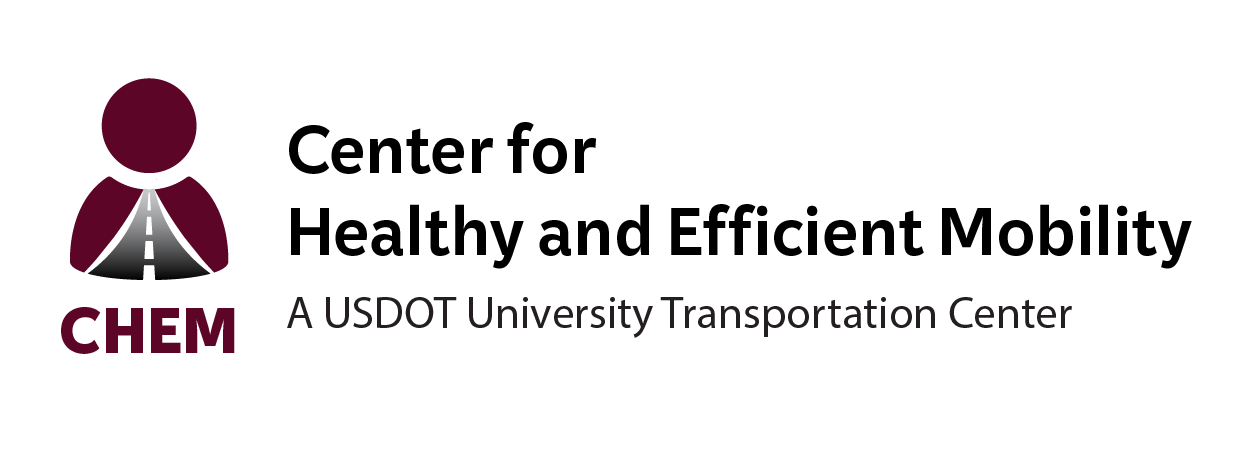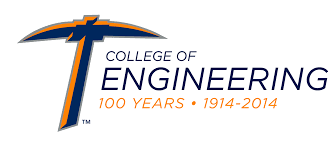Enhanced modeling and measurement of transportation emissions and energy consumption, and the implications for air pollution and public health outcomes.
Related Projects
Urban Policy Interventions to Reduce Traffic Emissions and Traffic-Related Air Pollution: A Systematic Evidence Map (Project Number Pending)
Lead: Texas A&M Transportation Insitute
As the urban population continues to grow, a greater quantity of people risk exposure to traffic-related air pollution (TRAP), and therefore also risk-averse health effects. In many cities, there is scope for further improvement in air quality through targeted local policy interventions. The objective of this systematic evidence map is to identify policy interventions at the urban-level that can be implemented by local authorities to effectively reduce traffic emissions and/or TRAP from on-road mobile sources, thus reducing human exposures and adverse health impacts.
Quantifying Traffic Congestion-Induced Change of Near-Road Air Pollutant Concentration
Lead: University of California, Riverside
Traffic congestion exacerbates the ambient air pollution by contributing a large amount of additional fuel consumption and tailpipe emissions. However, the relationship between the prevailing traffic condition and local air pollutant concentration is not well quantified in previous literature. The primary goal of this study is to quantify the contributions to the ambient air quality degradation due to traffic congestion. The study will use real-time traffic characteristics and ambient air quality data from monitoring sites to develop and validate a statistical model that can be used to understand the air quality impacts of traffic congestion.
Secondary Particulate Matter Exceed Primary Emissions from Current Gasoline Vehicles: Air Quality and Public Health Implications
Lead: University of California, Riverside
Gasoline Direct Injection (GDI) technology is becoming increasingly popular among vehicles in the market today. While there is relatively little-established knowledge on GDI vehicle emissions, studies have raised concerns relating to PM emissions, as well as the generation of polycyclic aromatic hydrocarbons (PAHs) and nitrated-PAHs. Another aspect that has not been investigated in detail is the secondary organic aerosol (SOA) formation, which is also a contributor to airborne PM. This study will characterize the primary emissions and the secondary organic aerosol (SOA) formation from current technology gasoline direct injection (GDI) and port fuel injection (PFI) vehicles when operated under different driving cycles, through in-use emissions testing and the use of a mobile atmospheric chamber and oxidation flow reactor to assess secondary aerosol formation.
Characterizing In-Cab Air Quality in Heavy Duty Diesel Construction Equipment
Lead: Texas A&M University
The goal of this project is to collect and analyze air quality data inside cabs of heavy-duty diesel construction equipment. Virtually nothing is known about indoor air quality (IAQ) in heavy duty diesel (HDD) construction equipment cabs. Previous research on other vehicles such as school buses found that intrusion of the vehicle’s own exhaust into the cab after emission from the tailpipe is a significant source of passenger exposure to diesel-related pollutants. This study will provide empirical evidence regarding the infiltration of emissions, IAQ and operator exposure in HDD construction equipment cabs.
Assessing Regulatory Compliance and Community Air Pollution Impacts of Crude Oil by Rail Transport in Baltimore City, Maryland
Lead: Johns Hopkins University
Increases in hydraulic fracturing, or “fracking”, in the Bakken Shale region of the United States have resulted in the transport of enormous volumes of crude oil by rail (CBR) across the country to refineries and ports along both the East and West Coasts. Baltimore City has been a hub for CBR transport throughout the fracking boom, due to its central location along the Eastern Shoreline and service as a transfer station along the Chesapeake Bay. This study will characterize CBR shipments in Baltimore City, and their impacts on local communities. Issues of regulatory compliance, impacts on measured volatile organic compounds (VOCs) in residential areas, and best practices in protecting community health will be addressed.
Truck Emissions-Exposure Study in Ports
Lead: Georgia Institute of Technology
Partners: University of California, Riverside and Texas A&M Transportation Institute
Ports serve as a hub for freight movement into and out of the United States and often face air quality issues due to the emissions from marine engines, freight trucks, drayage trucks, and cargo handling equipment. This has occupational health implications for truck drivers and others working and living in these areas. GT will lead the effort at the Port of Savannah; UCR will lead the study at the Port of Long Beach and Port of Los Angeles; and TTI will lead the study at the Port of Houston. We will conduct field measurements of in-use in-cab and ambient particulate matter (PM) concentrations, and correlate the concentrations with port activities using an expansion of the GT’s Fuel and Emissions Calculator and port simulation models.
Border Crossing Emissions Impacts Study
Lead: Texas A&M Transportation Institute
Partners: University of Texas at El Paso and Johns Hopkins University
Poor air quality and associated health impacts are a major health concern to citizens living in the U.S.-Mexico border region. This is especially true in areas near major ports of entry (POE), where large volumes of cross-border freight and passenger movement occur. This project will characterize the air pollution in El Paso and assess the impacts of traffic-related pollution on a POE bridge in the region.




